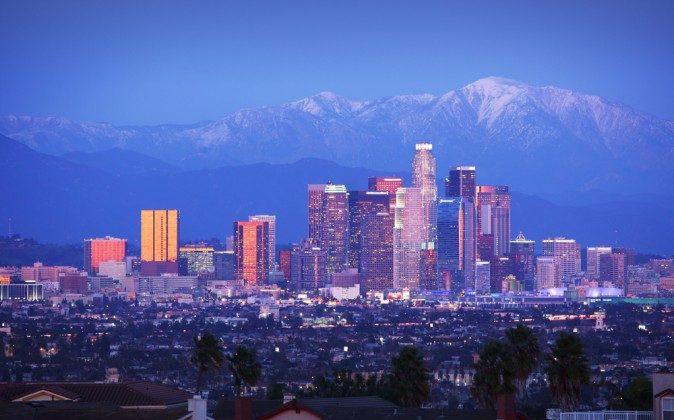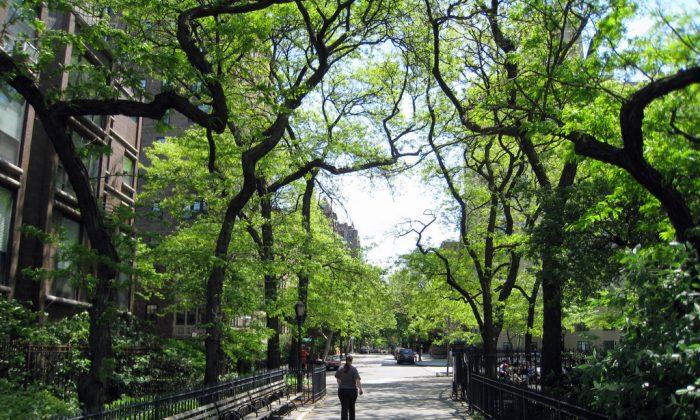This article was originally published on www.environmentalhealthnews.org. Read the original here.
A dozen years ago, neighborhoods around Riverside, an hour’s drive east of Los Angeles, had the nation’s worst soot: Every three days, on average, the air was declared unhealthful, and people were breathing twice as many microscopic particles as deemed safe.
But finally, later this year, for the first time ever, people in Riverside – and throughout the nation – will breathe air that meets an annual health standard for fine particles.
 . . |
Considered inconceivable just a decade ago, achieving the federal target in Southern California and nationwide is “perhaps one of the nation’s greatest environmental success stories,” said Sam Atwood, media relations manager at the Los Angeles Basin’s air quality agency.
But the victory will be short-lived.
The U.S. Environmental Protection Agency is about to begin enforcing a new standard for the pollutant known as PM2.5.
The Los Angeles region and the San Joaquin Valley, located in the middle of California, are expected to meet the old standard by December – right when they’ll be declared noncompliant under the new standard, said Sylvia Vanderspek, chief of the California Air Resources Board’s air quality data branch.
The EPA tightened the PM2.5 health standard a year ago because scientists warn that low levels increase deaths and hospitalizations from heart attacks, strokes, asthma attacks and other respiratory disease.
Spewed by trucks, buses, cars, factories and fires, particles less than 2.5 microns in diameter – 30 times thinner than a human hair – can penetrate deep into lungs and disrupt heart rhythms.
Achieving the new limit in out-of-compliance counties, all in California, will cost businesses an estimated $53 million to $350 million per year, according to the EPA. California’s air quality officials do not know yet which measures they will adopt, but they likely will try to retire more old diesel trucks and other vehicles, and replace them with new, cleaner engines.
“We’ve made dramatic progress,” said Atwood of the South Coast Air Quality Management District. “But reaching the new standard cannot be achieved just by tightening existing regulations.
“It’s going to require a lot more.”
The good news
In the four-county Los Angeles Basin, home to about 18 million people, emissions from fuel-burning vehicles and industries, coupled with sunny days, low rainfall, stagnant air and pollutant-trapping mountains, are a recipe for particle pollution.
Under the old standard in effect now, U.S. cities’ annual average cannot exceed 15 micrograms of fine particles per cubic meter of air.
 |
As recently as 2001, air in the Riverside area averaged more than double that concentration.
But in 2012, the entire four counties complied, except for one monitoring station in Riverside County’s Mira Loma, which was just 0.1 micrograms too high. The standard was violated on six days in Mira Loma last year, compared with 108 in 2001. That’s a 94 percent reduction. Last year’s preliminary data shows even Mira Loma complied.
“The average concentration as a whole has been cut in half since the 1990s and we expect all of the counties to be under the former standard by the end of 2014,” Atwood said.
And the trend is nationwide.
Over the past 10 years, tons of PM2.5 emitted into the nation’s air have declined 45 percent, while the concentrations people breathe have dropped 33 percent, according to EPA estimates.
All four of Chicago’s monitoring sites comply with the old standard, and in New York City, all eight comply. Across the nation, just four non-California counties exceeded it in 2012 – Lemhi County, Idaho, Ravalli County, Mont., Doña Ana County, N.M., and Philadelphia County, Pa. All are expected to dip below it by December.
Much of the credit goes to cleaner diesel engines, mandated by national standards.
It would take 60 new diesel trucks to produce the same amount of PM2.5 as a heavy-duty truck manufactured in 1988, based on EPA’s emission standards. The amount of soot allowable from a new truck declined 99 percent over the past 25 years.
Particle traps and lower-sulfur diesel fuel have done the job, said Allen Schaeffer, executive director of the Diesel Technology Forum, which represents diesel manufacturers.
“Today, diesel emissions make up a small and declining inventory of fine particles, not just in California, but around the country,” Schaeffer said.
The entire U.S. fleet of trucks, buses and cars now emits 43 percent less PM2.5 (amounting to about 137,000 fewer tons per year) than they did a decade ago, according to EPA data.
Power plants also have been cleaned up. The Chicago region, and Illinois as a whole, largely focused on coal-fired power plants to tackle fine particles, said Kim Biggs, a spokesperson for the Illinois Environmental Protection Agency.
Over the last ten years, U.S. industries have reduced total PM2.5 emissions by about 500,000 annual tons, or 26 percent.
The new challenge
But those reductions are not quite enough. The EPA estimates that another 4,300 annual tons must be eliminated from sources by 2020.
Under the EPA’s new standard, which drops to 12 micrograms from 15, as many as 66 counties nationwide will be out of compliance. However, all are expected to meet the 2020 deadline under existing regulations for vehicles and industry – except for seven in central and Southern California: Imperial, Kern, Los Angeles, Merced, Riverside, San Bernardino and Tulare. The number of monitoring stations violating the standard in California will shoot up to 18, according to current projections.
Over the past 10 years, tons of PM2.5 emitted into the nation’s air have declined 45 percent, while the concentrations people breathe have dropped 33 percent, according to EPA estimates.States that do not meet the new standard in December must give the EPA a blueprint by 2018 detailing how they will do so as expeditiously as possible.
Biggs said Illinois will not need additional measures to keep Chicago compliant. Nevertheless, officials are keeping their eye on one area – East St. Louis – to review how they might further reduce emissions there.
In the Los Angeles Basin, officials predict that existing rules on diesels and other sources will bring their peaks down to within one microgram of the 15 microgram standard.
It’s unclear what will erase that last microgram. Officials will figure it out through air quality modeling and combing through data on the estimated 418 tons of PM2.5 that are emitted in California every day.
Schaeffer of the diesel industry group said it’s hard to imagine squeezing more reductions from new diesel technology.
But hastening the turnover of older trucks and other diesel engines may help. About 85 percent of heavy-duty trucks on the road today don’t meet the EPA’s emission standards for engines produced beginning in 2010. Cleaner technologies for new diesel farm and construction equipment also are being rolled out.
“Maybe we need to look at other sources – such as getting rid of some of the older [diesel engines],” Schaeffer said. “Or tackling brake dust and tire wear, which are large sources of particulates as well.”
In the Los Angeles region, vehicles are expected to play less of a role in PM2.5 pollution in the future, with industry emerging as the major source. Statewide, estimates (see pie chart) show “area sources” are the top culprit, which consists of consumer products, wood burning, cooking and pesticides.
Air in most U.S. cities also meets another federal standard for PM2.5, a daily limit designed to protect people from short-term extremes from such sources as wood-burning fires or wintertime use of fuel oil. The Los Angeles Basin expects to comply this year. However, a few areas, such as Fairbanks, Alaska, and the San Joaquin Valley, are still trying to meet that daily limit, and must submit regulation plans by December.
“Maybe we need to look at other sources – such as getting rid of some of the older [diesel engines]. Or tackling brake dust and tire wear, which are large sources of particulates as well.” –Allen Schaeffer, Diesel Technology Forum In an effort to bring the sootiest cities into compliance, the Los Angeles Basin’s air quality board has implemented mandatory restrictions on when fireplaces can be used in private homes. This winter season, 16 no-burn days were declared when particulates were nearing unhealthful levels.
“The thing about PM2.5, you almost have to see what’s left on the filter, what still needs to be controlled,” Vanderspek said. “The task is pretty big.”
A moving target
The EPA tightened the PM2.5 standard because health experts keep finding impacts at lower levels than previously thought.
“For health effects, the big one now is premature mortality,” said Scott Fruin, an assistant professor at the University of Southern California who studies PM2.5’s health impacts. “We see reduced life expectancy and higher chances of developing cardiovascular disease in places where the standard isn’t met.”
PM2.5 seems to alter heart rate variability, which controls how heartbeats respond to stress, and it has been linked to heart failure, strokes and other cardiovascular problems. It also triggers asthma attacks and other respiratory problems.
“It’s still an open question – what is it about particulates that causes these effects in terms of components,” Fruin said. “Some components are certainly more toxic than others in PM but we just don’t know which components are most toxic.”
Based on various studies, experts estimate that fine particles are linked to about 800,000 deaths annually worldwide.
On days when soot increases by just 10 micrograms per cubic meter, there is about an 8 to 18 percent increase in overall deaths but “largely driven by increases in cardiopulmonary or cardiovascular deaths,” according to the American Heart Association.
“The new standard will have enormous benefits … so many lives saved...If you’ve never had air that clean you have no idea how big the benefits will be yet, and we’re excited about that.” –Janice Nolan, American Lung Association That translates “into reduced life expectancies as large as a year or two in many urban areas,” Fruin said.
The EPA estimates that by 2030, the new standards will prevent 40,000 deaths and 32,000 hospitalizations – saving an estimated $4 billion to $9.1 billion in annual health costs.
When announced a year ago, the American Chemistry Council, which represents chemical companies, said it was disappointed that EPA lowered the standard “given the uncertainty of the particulate matter science.”
But health advocates said the only question mark remaining is how many lives the increased reductions will save.
“The new standard will have enormous benefits … so many lives saved,” said Janice Nolen, assistant vice president of national policy at the American Lung Association. “If you’ve never had air that clean you have no idea how big the benefits will be yet, and we’re excited about that.”
Once the Los Angeles region is again declared non-compliant, the South Coast Air Quality Management District – which has been trying to clean the region’s air since 1977 – will go back to the drawing board.
The best guess is that it will take until 2025 for the Los Angeles region to achieve healthful particulate levels. By then, of course, the standard could change again.At the same time, the region must keep wrestling with its other pollutant, ozone, the main ingredient of smog, created from gases spewed by cars, businesses and households. The Los Angeles Basin still tops the nation with the worst ozone levels.
The best guess is that it will take until 2025 for the Los Angeles region to achieve healthful particulate levels. By then, of course, the standard could change again.
“We’re going to cross the finish line in 2014 with all of our monitoring stations meeting the old [PM2.5] standard,” Atwood said. “And we know we can get to 13 micrograms with the current measures on the books.
“But to get below that, we’ll have to develop yet another plan.”





Friends Read Free